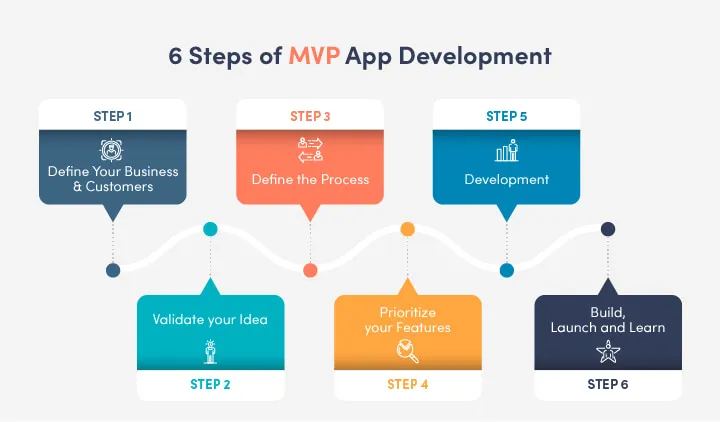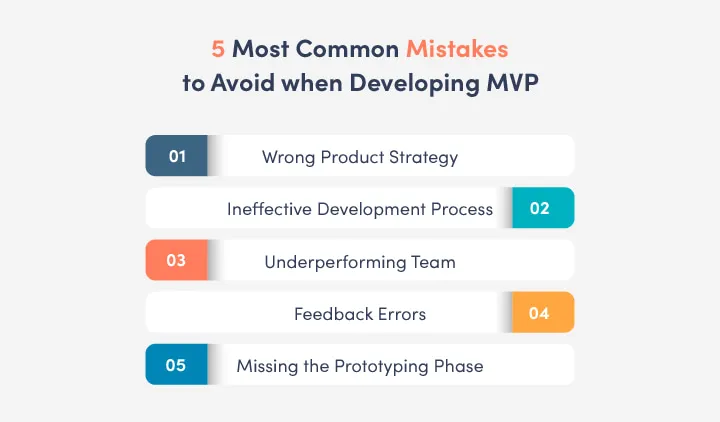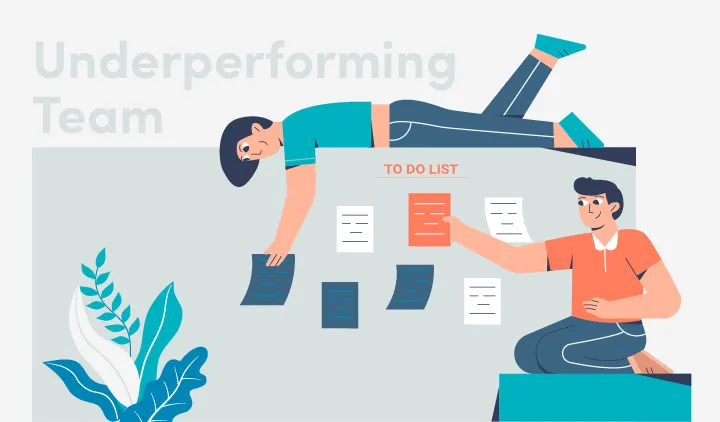Bringing a new idea into existence is a considerable risk. You may have a great idea, and it seems like it would work well, but do you know if you can successfully implement it or not? Here comes Minimum-Viable-Product (MVP) to the rescue.
At Selleo, we regarded MVP as the best way for risk reduction, the highest investment returns, and in general, faster time-to-market. Inspired by the success stories of giants like Airbnb, Uber, Twitter, and Netflix, MVP has become the talk of the town. Today we will discuss MVP, from definition to best practices - everything that you need to know.
What is MVP (Minimum Viable Product) App Development?
Minimum Viable Product is a version of a product with limited features. It allows us to get a general understanding of the final product and learn how to use it as well as to test the product and make amendments later based on customers' feedback.
From this article, you will find out how to build an MVP - Is it possible for 10k?
Why Should You Create MVP in the First Place?

There are quite a few benefits coming from building an MVP including a decreased delivery time and a more flexible approach to development. Here are some of the other advantages of using MVP:
Focus on the Core Value Proposition
An MVP app concentrates on a single concept and does not include any other features. Having some of the most important but least expensive features might help you save money on development. Building an MVP enables the application to be tested with the least amount of risk.
Lower Costs
When creating an MVP, you concentrate on a small number of features, a minimal app design, and addressing problems for your target audience. This strategy allows businesses to launch with less money, time, and effort and swiftly discover their first clients. You can also save money and outsource to the best MVP App development company instead of building an in-house team.
Identifying Drawbacks
An MVP allows you to learn what your potential consumers think about your ultimate product and how they want to view it. You can rapidly pinpoint the major issues and resolve them in the upcoming release due to the feedback from users.
Building a Relationship with Customers
Because you rely on their early comments to integrate more features into the service, an MVP helps you develop a closer connection with customers. This demonstrates that you appreciate their feedback. It can also assist you in figuring out if your app is suitable for your target market.
Reduce Remakes
Because the product's core is evaluated with an MVP, it is less likely that the complete product will need to be redesigned and rebuilt.
Attract Investors
For enticing investors, starting a firm with a well-performing minimum valued product might be vital. If your MVP is well-received, it will demonstrate that your business concept is viable. As a result, finding funding for future development will be considerably easier for you.
Try our developers.
Free for 2 weeks.
No risk. Just results. Get a feel for our process, speed, and quality — work with our developers for a trial sprint and see why global companies choose Selleo.
Can I skip MVP?
Businesses that don’t assess the viability of business ideas fail to withstand the fierce market competition. An MVP is the most convenient and effective way to collect the initial feedback from users and improve the product accordingly.
According to the US Bureau of Labor Statistics:
- 20% of new startups fail in the first year.
- 34% of startups close within the first 2 years.
- More than 50% of startups remaining after the second year close by the fifth year.
- Only 30% of startups reached a milestone of 10 years.
According to CBInsights, back in 2019, 42% of startups didn’t offer any worthy solution for market needs and failed to sustain their existence.
Did you know?
- Buffer, a platform whose foundation is based on MVP, had attracted one million users worldwide within 3 years of its launch.
- Shopify, another MVP-based platform, had about 286 million monthly active users by the end of Q1 of 2020.
- Uber, a ride-hailing service has expanded into 83 countries in 2018, resulting in $2.5 billion in revenue.
Now, the choice is yours. Would you like to be among businesses that make millions, or would you like to skip MVP and fail in the first year of your business?
6 Steps of MVP App Development
Now that we have established the understanding of a Minimum Viable Product and its advantages, let's figure out how to build an MVP in 6 steps.

Step # 1: Define Your Business & Customers
To characterize your company, you'll have to go deep into who your customers are, what behaviors they have, what issues they face in their lives, and how you can assist them in overcoming those issues. Many websites, such as Swagbucks, OnePoll, and Toluna, may assist you in constructing a complete picture of your target customer.
The first recommendation is to double-check the answers to these questions.
- How will my product address user issues?
- What is the size of the market I'd want to enter?
- Will my application be just another tool on the market, or will it launch a new category?
You may express your business concept using a business model canvas to accomplish the task. A business model canvas will show you exactly what difficulties your target customer is experiencing and how your solution will address them. You should only go to the next step after validating the viability of your business idea.
Step # 2: Validate your Idea
After you've figured out your market and identified the gap between existing companies and users, the following stage is to look for ways to close it.
Keeping tabs on your competition will provide you with a wealth of knowledge about your potential customers. Begin by looking at your competitors' websites to see what features they have and how they connect with their customers. Then, by visiting product review sites like G2, Capterra, or even social media accounts, compare the companies' statements with what customers say about the application. Validate your concept to see whether it's worth your time and money.
Step # 3: Define the Process
We must first identify process phases before we can create the primary user flow. This is fairly simple since all you have to do is outline the actions necessary to achieve the key aim of your product. At this stage, you should focus less on specific features and more on fundamental activities like "find shirts," "buy joggers," "manage customer orders," and "receive orders." These are the kinds of objectives that your customers will pursue when they utilize your product. We may then specify features for each stage once all of these process phases have been specified.
Step # 4: Prioritize your Features

Distinguish between must-have and nice-to-have features. Creating a prioritization matrix is one way to arrange your thoughts. Remember to emphasize the qualities that will help you stand out from your underperforming competition. It is an important milestone in the development of your MVP app. All of your teams must be on board.
Follow these steps to prioritize features:
Ask as a business: What is the most important action that you want your users to accomplish? What will be the main feature?
Ask as a business: What other features do you need to include in the app? How many of these features are not a priority and can be excluded in the beta version.
Now sort the remaining characteristics into three groups: "must-have," "nice-to-have," and "don't care." This approach might be aided by using the Story Mapping methodology. You may create a matrix with a horizontal row representing important process stages (our user flow) and several features allocated to each step under each phase.
Step # 5: Development
You will need roughly three months to complete the MVP design and development stage once you've validated the core concept of your app and established the basic usability and user flow. Start by wireframing the primary screens and navigation techniques for the web, iOS, and Android platforms. You may attempt one platform for your MVP to save time and money and add more platforms afterward. Cross-platform development is another option for making your MVP less expensive and faster.
Users should not be overburdened by complicated, time-consuming, and costly UI components and animations when viewing your MVP displays. You may also engage with an outsourcing firm with a team of experts that can assist you in developing the best design and development process.
Step # 6: Build, Launch and Learn
When a product's development is nearly complete, it must be tested. In most instances, friends and family, alpha testing is also known as a Friends & Family release. When we talk about beta testing, we're referring to the process of releasing a product into the wild to be tested by actual people. The duration of beta testing varies, but it usually takes 1–2 weeks to receive enough input. You may decide to make adjustments in subsequent versions of your product based on feedback from beta testing. Keep in mind that only the most critical adjustments should be implemented right away.
Must Remember Tips for Creating MVP App
As you can see, creating a well-balanced MVP is a skillful art. In this section of our article, we have compiled a list of some of the greatest strategies to assist the MVP development team in turning their amazing company ideas into long-term, successful apps.

Keep the Big Picture of your Business
When creating an MVP, a company should retain an open mind and consider the broad picture. Prioritize the steps and procedures, and keep the final objective in mind at all times.
Target Audience
You are making an app for your target audience. Thus it needs to be appealing to them. Otherwise, it's pointless. Before beginning the development process, a company might conduct surveys to learn about the demands of their target market.
Right People and Futuristic Deadlines
To be successful, you must have the proper team, the necessary talents, and tight collaboration. To enhance your products, seek out specialists that can provide you with feedback in both development and business sectors.
Find your Actual Minimum
If you watched Eric Ries' video, you'll see that he presents a formula for establishing your MVP's basic requirements. This is how it goes:
Well, maybe what features we think are best for the audience, they might find them useless.
There can be three possibilities:
- Your target audience hates your app
- Your target audience is okay with it but doesn’t love it
- Your target audience loves the app as it is.
In short, the app should be salable and as per the need of your target audience.
The App Monetization Strategies
Set your business app monetization strategy. Decide whether your app will be:
- Freemium app that earns revenue from advertisements
- Subscription-based app that earns by selling subscriptions
- An e-commerce Merchandising selling app which earns profit by selling products of different producers
- In-App Purchases that earns revenue by selling commodities from within the app
- Transaction based that charges Fee over each transaction
Measuring & Setting KPI's for MVP
As an entrepreneur, you should use actionable analytics to make decisions. They're what you'll need to get your concept off the ground. You need techniques to quantify a product's success or failure to be viable, and the metrics must be integrated into the product definition from the beginning.
What are the Key MVP Metrics for most Startups?
Standard MVP metrics for most startups include:
- Churn Rate: the percentage of customers who have discontinued their subscription in a given period
- Customer Acquisition Cost (CAC): the average cost of acquiring a customer
- Monthly Recurring Revenue (MRR): the monthly projected revenue a company can expect to earn
- The Lifetime Value of a Customer (LTVC): the expected profit from a customer over the whole of their time using the product
- The Average Revenue per User (ARPU): the average income received from each customer
5 Most Common Mistakes to Avoid when Developing MVP

Mistake 1 — Wrong Product Strategy
The soul of your company is your product strategy. Here are some signs that your product strategy isn't working:
- The issue you're trying to solve is entirely unimportant. When an MVP is nearly finished, the owner may be surprised to discover that the product is unnecessary.
- Your marketing and sales strategies are in a state of flux. What are the demographics of the people you want to reach? What will it cost to get the first 100 people to sign up? What are the sources of users? You've got a lousy product strategy if you have no answers.
- You won't be able to pinpoint your primary distinction. How fierce is the competition? Are you entering a market that has yet to be mastered? Or are you jumping into a business shark-infested pool? Whatever it is, you must understand what will propel your web product to the top.
What can Help?
- Communicating with consumers who confront challenges regularly might spark a brilliant idea for your product that will give a dependable solution for your users.
- You can engage a remote specialist or outsource your marketing to a third-party firm if you don't have a skilled in-house marketer.
- Define your vision clearly.
Mistake 2 — Ineffective Development Process
Having the right team, process and skills are as important for your app's success as water to live and air to breath.
How do you know that the MVP isn't overloaded or at the minimal side?
- If it takes you more than three months to create your MVP, then there is a problem.
- Many brilliant concept creators expect to see a fully functional app at the MVP stage. Adding more features, on the other hand, is a waste of time and money because new features are unlikely to be useful to target users but will cause the MVP release to be delayed.
- If you postponed bug fixes after building your MVP.
What can Help?
- Commit to an agile methodology. Complicated needs should be broken down into multiple basic features. Then establish timelines for each feature and stick to them.
- Begin with an MVP prototype. A prototype aids in the definition and visualization of critical aspects of a high-fidelity MVP so that the user experience may be built.
- Goldilocks quality is the best approach, introduced by Daniel Burka - a Google Ventures design partner.
Mistake 3 — Underperforming Team
If your startup's product strategy is its engine, then your development staff is its fuel. Let's look at how the amount of expertise of your web developers affects the implementation of your business project:
- Members of your web development team with low skill levels work slowly, make mistakes, and neglect the backlog.
- If your development staff is overloaded, you may need to employ more web developers, UI/UX designers, QA testers, or project managers. However, you'll most likely go over your budget in the process.
- When you receive your first user feedback, they may bring out certain flaws in your MVP. Since an inexperienced development team is unlikely to deal with these flaws, improving your MVP will be impossible.

What you can do to avoid this:
- If you're constantly experiencing delays with critical jobs, appoint someone to be in charge of ensuring that developers stay on track.
- Hold seminars for product discovery.
- You may hire trained professionals for your in-house team, hire individual freelancers, or outsource your development to a web development firm with expertise in developing apps in your sector.
Mistake 4 — Feedback Errors
The purpose of creating an MVP is to get feedback. Despite the importance of feedback, it can occasionally lead you to the incorrect path in terms of progress.
Feedback may be misleading when:
- If your family and friends aren't in your target demographic, they aren't likely to utilize your web product and can't provide you with useful feedback.
- Many people believe that receiving a lot of feedback is a good thing. However, too much feedback might cause you to pivot when developing your MVP quickly.
- Quantitative feedback tells you how many and how much there are, but qualitative feedback tells you why. The image of how users feel about your web application will be inadequate if you exclude either of these perspectives.
Possible Solutions:
- Not everyone is a potential user - Accept it.
- Take a look at the most crucial feedback from which you wish to learn. You can categorize client feedback by its value, source, or bug kind, for example.
- When determining what's missing and what's unnecessary, consider both quantitative and qualitative feedback.
Mistake 5 - Missing the Prototyping Phase
Even the MVP requires prototyping because it is a functioning product. Many companies have been known to jump right into MVP development, with simply a list of essential features and a hazy sense of how it should appear.
Collaborate with the design team to produce a project wireframe collaboratively. Outline the different user paths and visualize how the product should appear. You don't want to begin developing and then change your mind halfway through. This is why prototyping is so important before creating an MVP. It will assist you in avoiding significant future hassles.
Final Thoughts
Whenever you are going for web or app development, there is always a goal behind it. Keep the mind focused on your goal and plan everything accordingly. If you don't have in-house skilled professionals for MVP development, consider outsourcing the project to a trusted development company.
Double-check the arrangement of communication and the correlation of their portfolio to your desired tech stack before picking a development agency to collaborate with.
**If you are currently looking for an experienced partner to help you develop an MVP, check out **Selleo teams. Our skilled developers will be more than happy to discuss your product.





